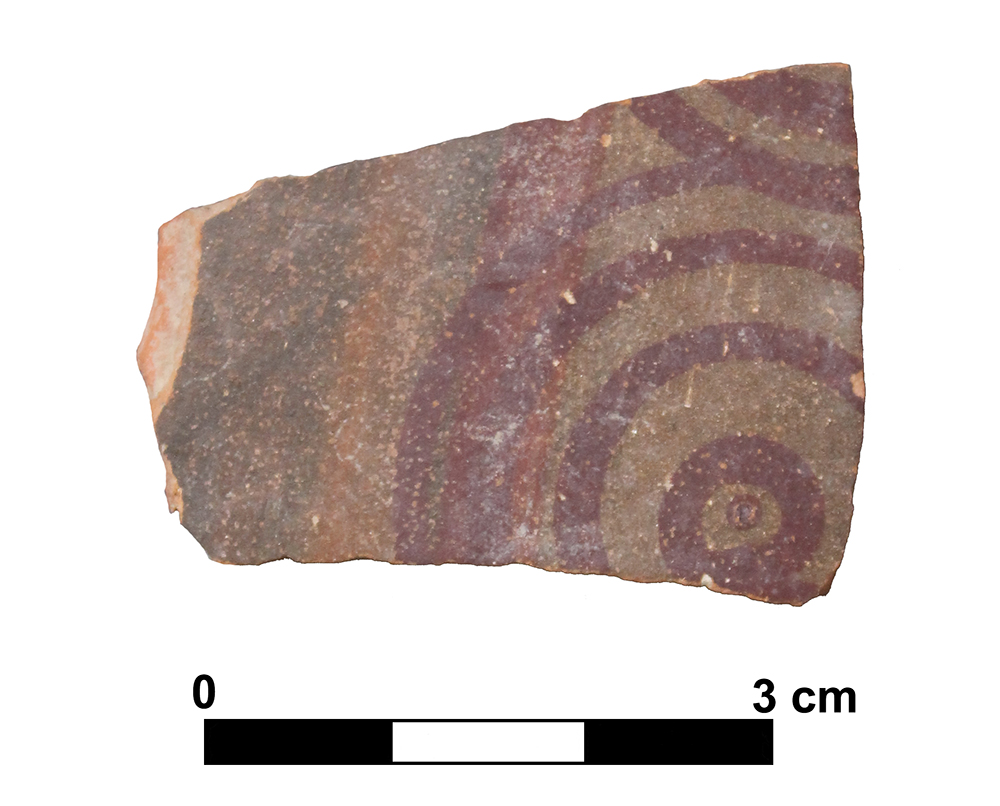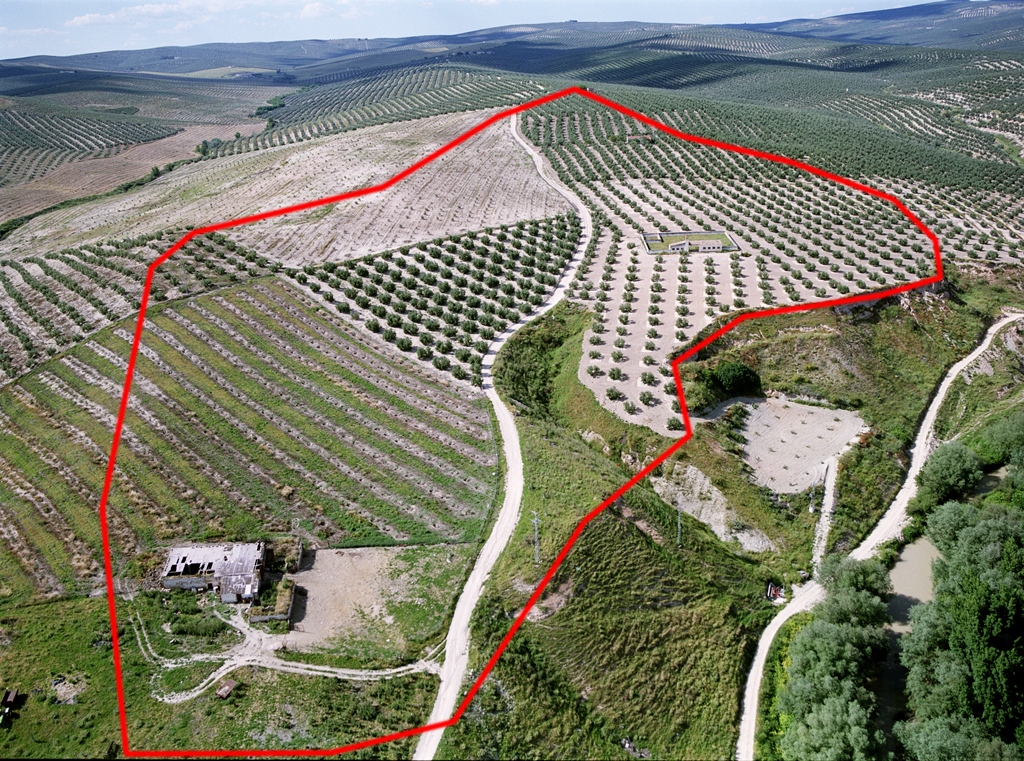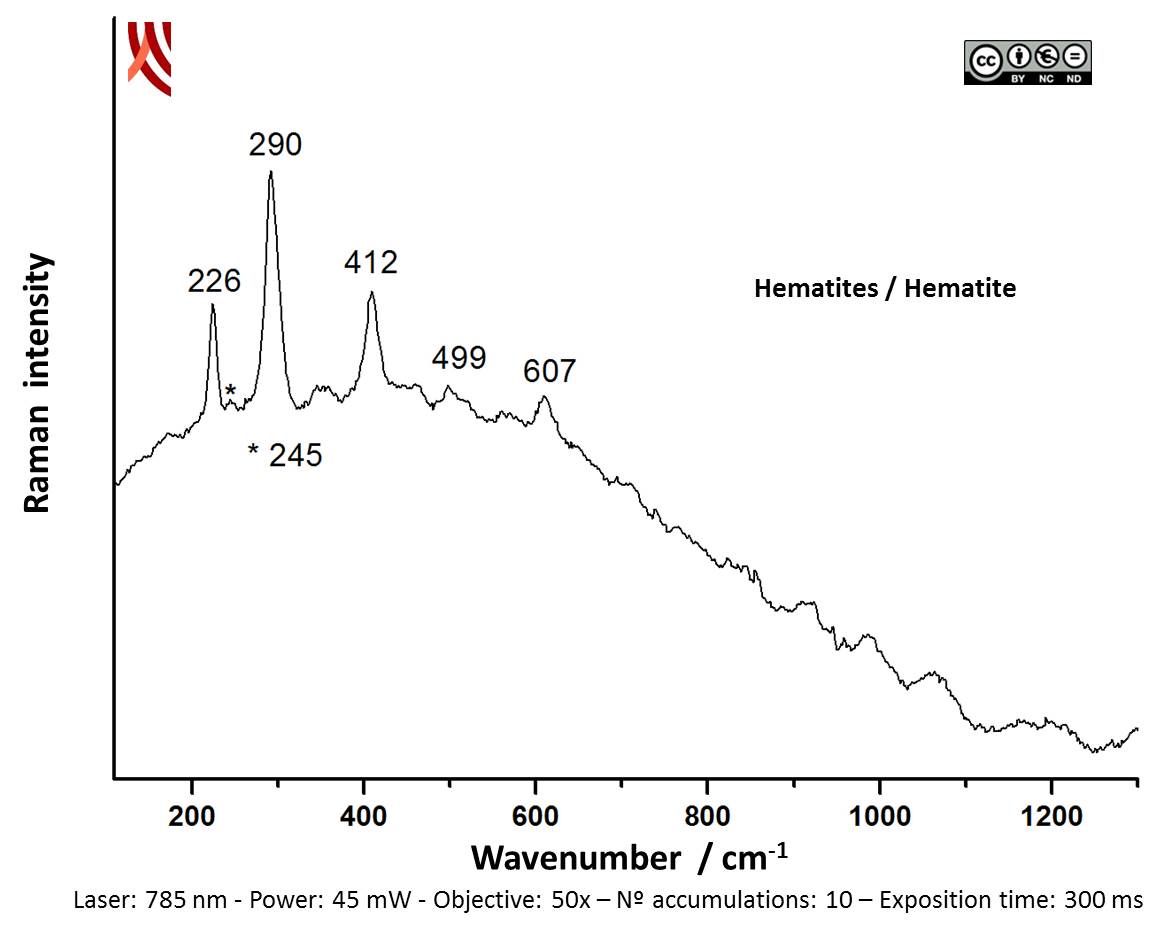Ceramic vessel 8-08. Oppidum Los Turruñuelos.
The grey background is the result of the transformation of hematite in magnetite (Fe3O4) in a reducing atmosphere. EDXFR analysis confirms the presence of Fe (5.49% wt) and the lack of Mn (0.01% wt) in the grey decoration.
Dimensions
: 3.5 Centimeters
: 2.5 Centimeters
Materials
pottery
Temporal
: Iberians, Iberian
: 4th-3rd ct. BC
Spatial
: Oppidum Los Turruñuelos
: Úbeda-Villacarrillo, Jaén, Spain
: WGS84
Copyrights
Creative Commons - Attribution, Non-Commercial, No Derivatives (BY-NC-ND)
References
Bellón, J. P.; Ruiz, A. Molinos, M; Rueda, C. y Gómez F. (eds.) (2015): La Segunda Guerra Púnica en la Península Ibérica. Baecula: arqueología de una batalla. Textos CAAI 7. Universidad de Jaen. Jaén.
Digital Resources
-

Creative Commons - Attribution, Non-Commercial, No Derivatives (BY-NC-ND)
Arquiberlab
http://creativecommons.org/licenses/by-nc-nd/3.0/ -

Creative Commons - Attribution, Non-Commercial, No Derivatives (BY-NC-ND)
Arquiberlab
http://creativecommons.org/licenses/by-nc-nd/3.0/ -

Creative Commons - Attribution, Non-Commercial, No Derivatives (BY-NC-ND)
Arquiberlab
http://creativecommons.org/licenses/by-nc-nd/3.0/ -
Pdf file
Creative Commons - Attribution, Non-Commercial, No Derivatives (BY-NC-ND)
Arquiberlab
http://creativecommons.org/licenses/by-nc-nd/3.0/
Activities
Archaeometric analysis Physical-chemical analysis Ceramic. Analysis of decoration.
| |
Raman Microscopy Mineral analysis of red decoration Non destructive. Surface cleaning. Sample pretreatment is not required. Direct measurement Micro-Raman Spectroscopy (MRS) Renishaw ‘in via’ Reflex Spectrometer coupled with a confocal Leica DM LM microscope (CICT, University of Jaén), equipped with a diode laser (785 nm, 300 mW), and a Peltier-cooled CCD detector, calibrated to the 520.5 cm-1 line of silicon. | |
X-Ray Fluorescence Elemental analysis of the red and grey decoration. Non destructive. Surface cleaning. Sample pretreatment is not required. Direct measurement. Energy dispersive X- ray fluorescence (EDXRF) EDAX (model Eagle III) fluorescence spectrometer (CITI, University of Seville). This spectrometer is equipped with a microfocus X-ray tube with an Rh anode, a polycapillary lens for X-ray focussing, and an 80 mm2 energy dispersive Si-(Li) detector. The sample chamber incorporates an XYZ motorized stage for sample positioning. A high resolution microscope is used to position the sample on the desired distance from the polycapillary. To increase the sensitivity of the low Z elements, the sample chamber can be brought under vacuum. For the analysis of the samples, a spot size of 300 μm was chosen at an operating X-ray tube voltage of 40 kV. The tube current was adapted for each sample in order to optimise the detection of X-rays; |













